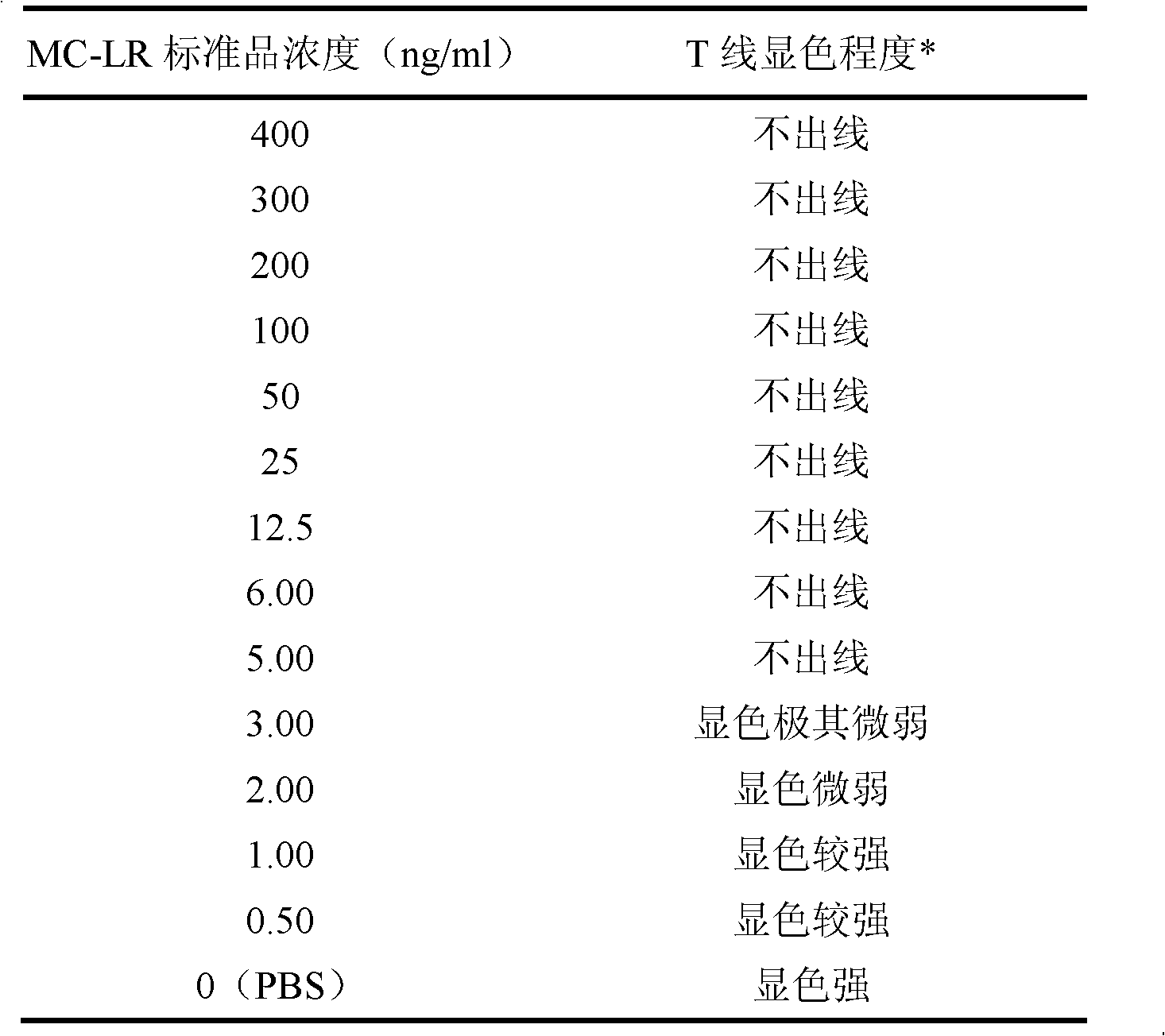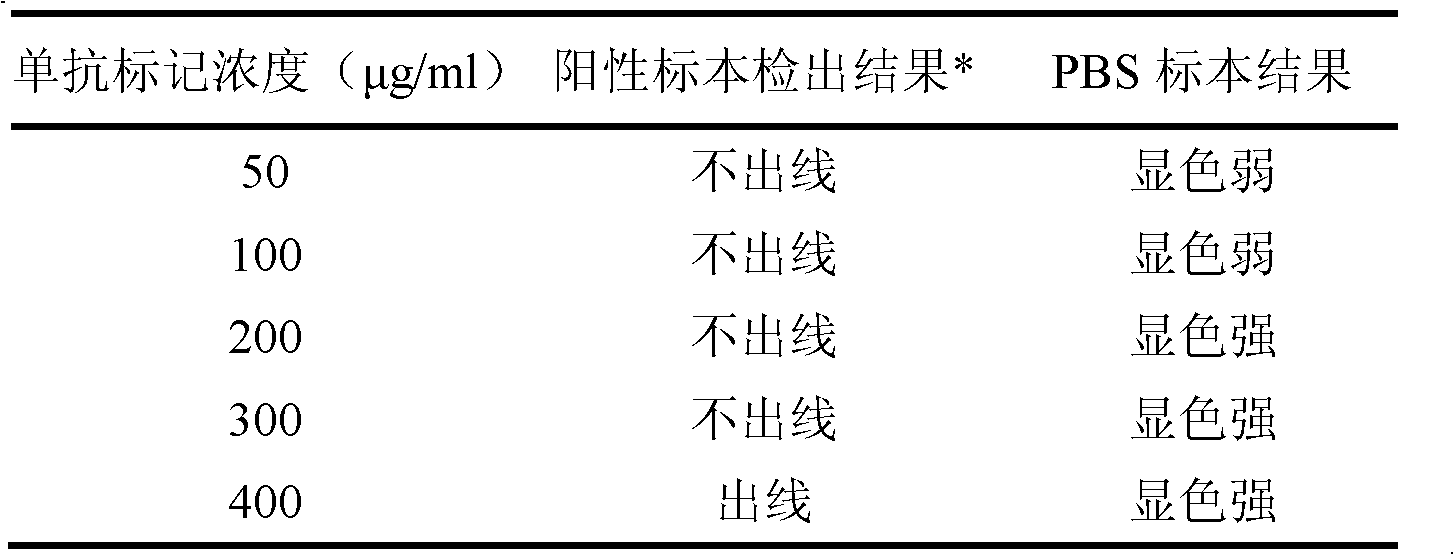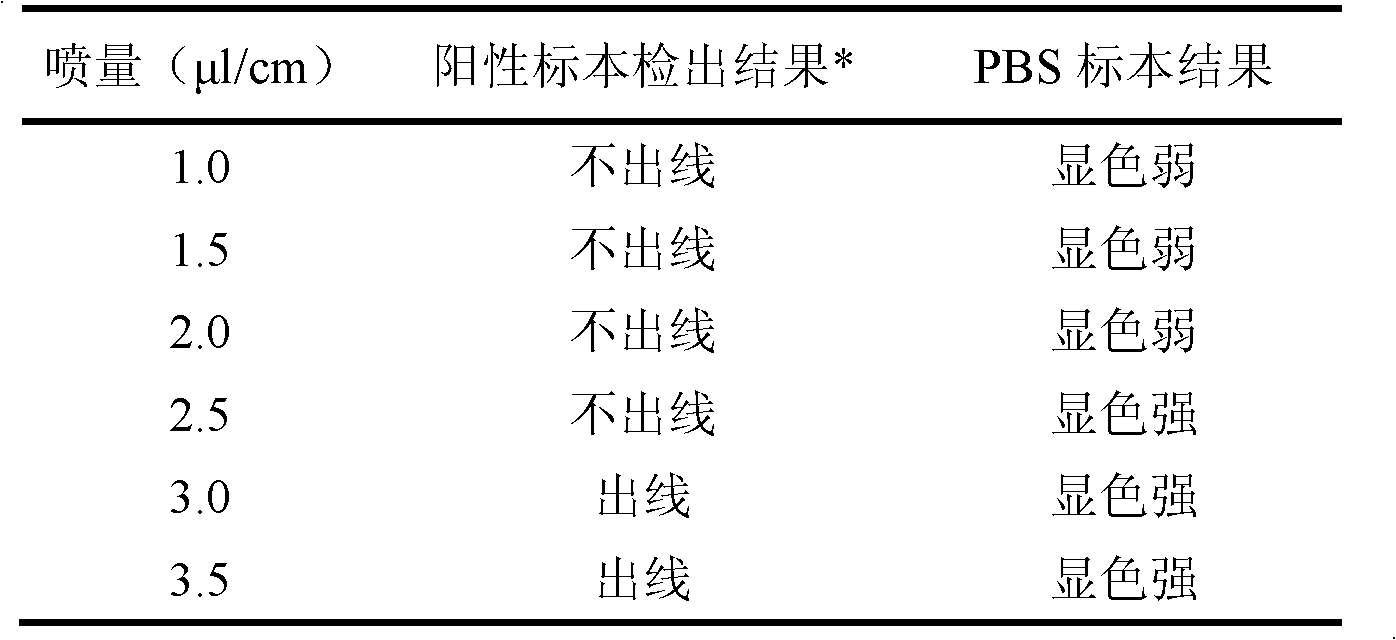Method and test paper for rapidly detecting microcystins
A technology of microcystin and test paper, which is applied in the direction of measuring devices, instruments, scientific instruments, etc., can solve the problems of low quality and no sales, etc., and achieve the effect of simple detection method, intuitive results and easy use
- Summary
- Abstract
- Description
- Claims
- Application Information
AI Technical Summary
Problems solved by technology
Method used
Image
Examples
Embodiment 1
[0027] Embodiment 1 complete antigen preparation
[0028] 3 mg of microcystin was dissolved in 1.2 ml of DMF, 100 microliters of activation solution (12 mg of EDC, HCL and 7 mg of NHS dissolved in 1 ml of DMF) was added, and the reaction was activated overnight at 4°C. Take 20 mg of KLH keyhole limpet protein and dissolve in 5 ml of carbonic acid buffer solution with pH=9.6 for 1 hour, and overnight at 4°C.
[0029] After mixing, dialyze with 0.01M PBS for 3 days, centrifuge to get the supernatant, use lorry method to measure the concentration of MCLR-KLH conjugate to 1.4 mg / ml, and then dilute to different concentrations as needed.
Embodiment 2
[0030] Preparation of embodiment 2 monoclonal antibody (mouse anti-MC-LR)
[0031] Animal immunization: Mix an appropriate amount of MCLR-KLH with an equal volume of complete Freund's adjuvant, fully hatch, take five 8-week-old female BALB / C mice, subcutaneously at 3 points on the back of the neck, subcutaneously in the armpit (popliteal) of the limbs, and intraperitoneally. Each mouse was injected with 500 μl of post-hatch antigen (equivalent to 100 μg of immune antigen per mouse). After 14 days, an appropriate amount of MCLH-KLH was mixed with an equal volume of incomplete Freund's adjuvant, and after complete hatching, the antigen was injected subcutaneously at multiple points and intraperitoneally, and immunized once every 14 days by this method. Seven days after the third basic immunization, blood was collected from the tail vein to detect the titer.
[0032] MCLH-K coated enzyme samples, the indirect method to determine the potency. Mouse serum serum was serially dilut...
Embodiment 3
[0038] The preparation of embodiment 3 colloidal gold
[0039] With reference to the preparation method of colloidal gold particles introduced by Frens1973, get 1ml 1% chloroauric acid (HAuCl 4 ) solution, added to 100ml of water, heated to boiling, then added 0.5-4ml of 1% trisodium citrate, mixed and boiled for 5min, until the color did not change. The method can prepare gold particles with different diameters ranging from 15 to 60 nm, and the particle size depends on the amount of trisodium citrate added.
[0040] 0.01% chloroauric acid (HAuCl 4 ) aqueous solution 100ml is heated to boiling, adds 1.5ml of 1% trisodium citrate, mixes evenly, and boils for 5 minutes, after the color of colloidal gold solution changes from blue to purple, it is cooled for later use to obtain a colloid with a particle size of 30nm (± 2nm). gold.
PUM
| Property | Measurement | Unit |
|---|---|---|
| Particle size | aaaaa | aaaaa |
| Particle size | aaaaa | aaaaa |
Abstract
Description
Claims
Application Information
 Login to View More
Login to View More - R&D
- Intellectual Property
- Life Sciences
- Materials
- Tech Scout
- Unparalleled Data Quality
- Higher Quality Content
- 60% Fewer Hallucinations
Browse by: Latest US Patents, China's latest patents, Technical Efficacy Thesaurus, Application Domain, Technology Topic, Popular Technical Reports.
© 2025 PatSnap. All rights reserved.Legal|Privacy policy|Modern Slavery Act Transparency Statement|Sitemap|About US| Contact US: help@patsnap.com



